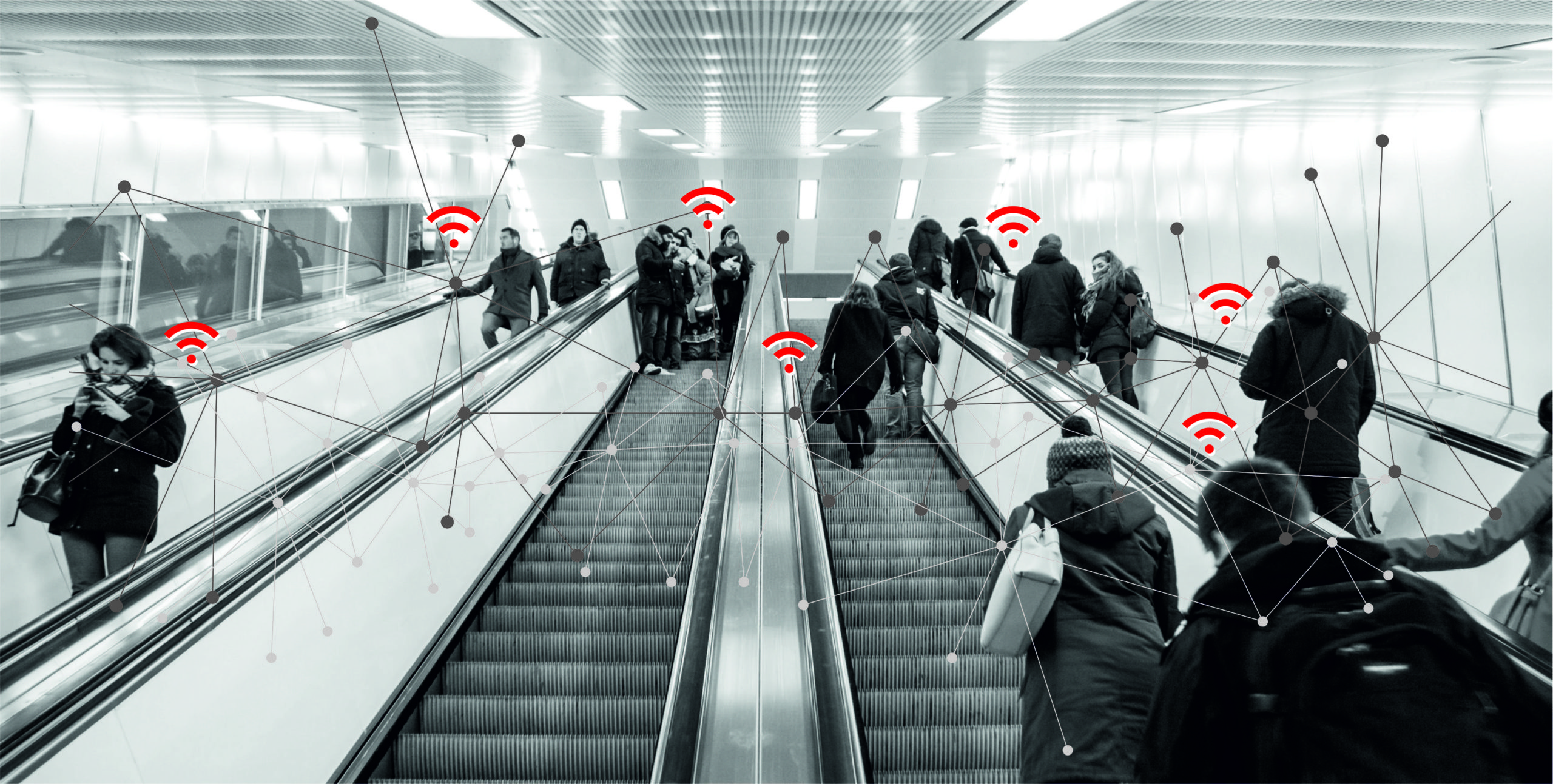

Indoor Positioning System (IPS) based on Wi-Fi is used in various projects.
Why? A wide range of different types of existing Wi-Fi hotspots can be used for this. Also, no login is required as long as users have enabled Wi-Fi on their smartphones and have established connection.
Nevertheless, indoor positioning via Wi-Fi connection comes up against specific disadvantages. A) Accuracy is 5 to15 meters which is less than with Bluetooth Low Energy and, b) iOS devices cannot use client-based positioning.

How Does Indoor Positioning with Wi-Fi Work?
Each Wi-Fi access point transmits specific data no matter if it is customer hotspot, router or any other device able to connect to the internet. An application can calculate the current location of the end user device (client-based positioning) when using an RSSI (Received Signal Strength Indication) and MAC address (Media Access Control). A database of information is necessary in order to compare the location which this data. This method is known as fingerprinting and functions only with Android devices due to technical restrictions. On the contrary, iOS devices cannot be used for Wi-Fi indoor navigation.
Indoor Positioning Using Wi-Fi
GRECiOT System receives all the data transmitted by Wi-Fi-capable devices (it doesn’t matter who the manufacturer is) or Wi-Fi tags.
Localization is affected by various restrictions depending on whether the device is connected to a Wi-Fi network or not. In case the Wi-Fi client is not connected, latency times of up to 5 minutes result from the irregular sending of “probe request” (searching for available access points), which is controlled by the mobile operating system and cannot be influenced. Furthermore, the smart device or the actual number of devices in an area cannot always be determined clearly due to randomly generated, changing MAC addresses (“MAC randomization”). On the contrary, when the smartphone is connected to a Wi-Fi network, then latency times are significantly lower as long as traffic is generated over the network. In addition, there is no MAC randomization, which allows the device to be uniquely assigned. Connection to an access point does not affect position accuracy.
The accuracy of Wi-Fi for indoor positioning is typically 5 to 15 meters due to the fact that access points are usually using positions that have been optimized for data communication. Shielding through walls, ceilings and people, as well as the number of access points directly affect this precision. Using smartphone sensors can improve the results and enables determining the floor level.





